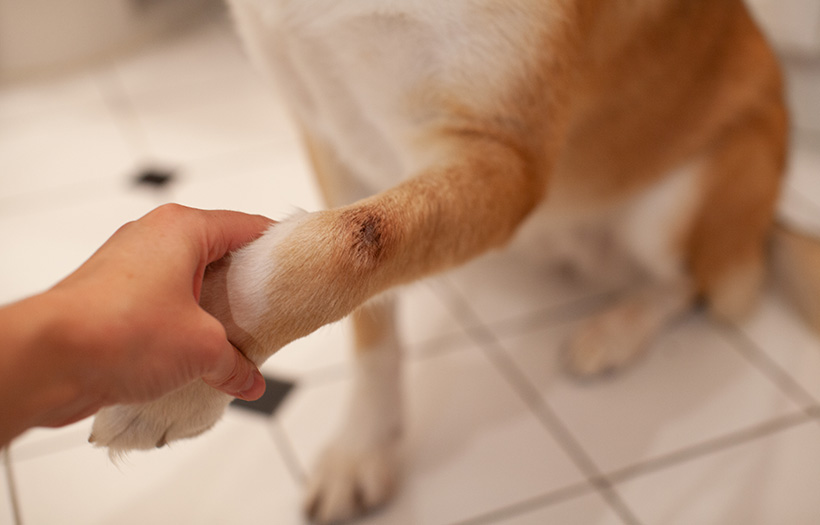Identify and Treat Hot Spots on Dogs

Summer brings longer days, sunny skies and warmer temperatures. For our canine friends, it can also bring hot spots. Hot spots are one of the most common skin irritations a dog can experience and are especially more prevalent in the summer months.
Also known as acute moist dermatitis or pyotraumatic dermatitis, a hot spot is a skin infection that can start off small but intensify rather quickly. Knowing what to look for, what the risk factors are and how to manage them, can help keep your dog comfortable and healthy this summer.
Identifying a Hot Spot
Just as its name suggests, a hot spot is a red, itchy and painful patch of skin on the dog’s coat. However, it may not start that way. Often hot spots initially look like a small red mark that could be mistaken as a bug bite. This irritation can trigger licking, scratching and chewing of the area thus causing it to grow and worsen. When this happens, the infected area can become infected and inflamed. The spot may also have a shiny or scabby appearance and possibly oozing.
Causes for Hot Spots
While it is hard to say what initially causes hot spots, there are factors that can contribute to their onset and aggravation. The cycle of excessive scratching and licking can make the skin vulnerable to infection.
A dog’s breed can also play a role. The thick or long hair from breeds like those in the Retriever, Shepherd, and Husky families, can trap moisture or hide spots allowing bacteria to grow and intensify. Other underlying issues can cause hot spots like allergies, fleas, arthritis, and injury to skin or soft tissue.
Treating Hot Spots
If you catch a hot spot early enough, treatment at home may be an option. Oftentimes though, hot spots require the care of a veterinarian and usually involves the following:
● Clipping and Cleaning. Trimming back the hair a little bit beyond the affected area is necessary to avoid possible matting. It is also important to clean the area properly with an antiseptic solution such as chlorhexidine.
● Medicate. Depending on the severity of the hot spot, a topical, oral or injected antibiotic may be used. The vet may also administer an anti-inflammatory to reduce itching so the wound can heal.
● Treat the Root Cause. Identifying what triggered the hot spot in the first place will keep it from coming back.
Prevention of Hot Spots
The best way to keep hot spots away is to minimize risk. Stay on top flea control, inspect for skin irritations regularly, manage allergies and keep hair shorter especially in the summer.
Also, consider feeding your dog a recipe that supports skin & coat health with optimal levels of Omega-6 and Omega-3 fatty acids like our Loyall Life Sensitive Skin & Coat Salmon & Oatmeal Recipe.
If it is difficult to get your dog’s skin under control, you should consult with your veterinarian for additional help. With the right care, you can keep your canine safe and healthy all summer long.
